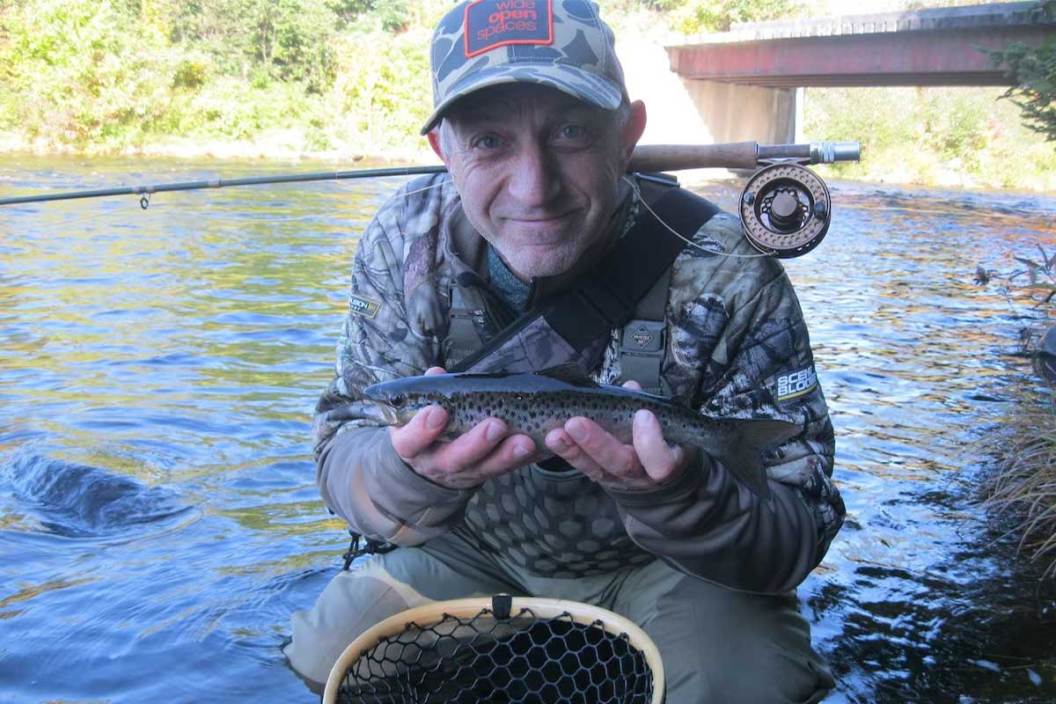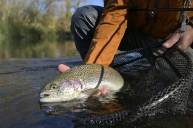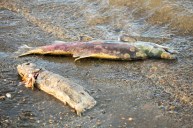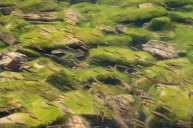The Atlantic salmon has been a bucket list fish for me ever since I was a kid, and I recently checked off that box. Without even having to look it up, the scientific name of Salmo salar is altogether one of the most familiar and important species of fish to me, and one of the most popular gamefish targets that any angler could hope for. The interesting part is that they both thrive in the ocean as an anadromous fish while others of their species live their entire lives in freshwater. There is actually no major difference between Atlantics and landlocks, mainly a few genetic distinctions that we'll let the scientific community argue over.
The main thing to understand about the Atlantic salmon is that they are one of the most sought after game fish in North America (and a few other places around the world). Yet, they remain an enigma due to the fact that they are considered endangered in some places and are particularly targeted in others. We'll share a little more about this amazing fish so you can increase your knowledge base on an iconic species.
Atlantic Salmon vs. Landlocked Salmon
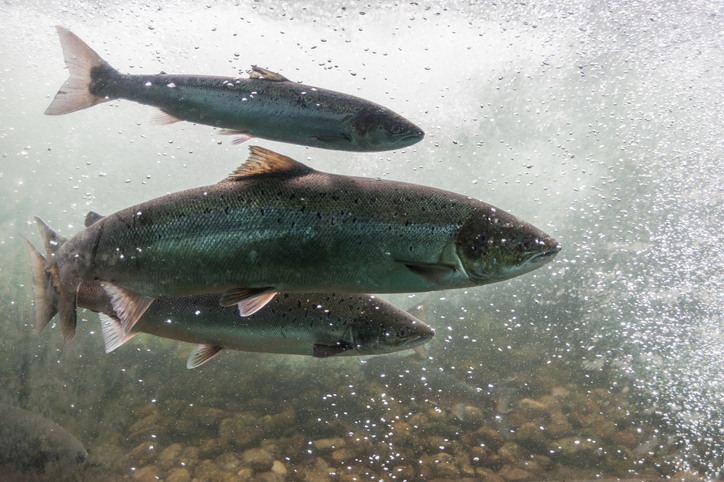
Landlocked salmon, sometimes referred to as landlocked Atlantic salmon, is the freshwater form of the more well known and sea-run Atlantic salmon. When a fish is born in freshwater, travels to saltwater and lives most of its life in the ocean, and then returns to freshwater streams to spawn, they're known as anadromous. Landlocked salmon are defined by another word: potamodromous, which means that they use large inland lakes and rivers to complete their life cycle entirely within freshwater.
Landlocked salmon share the same silver color and sparse black spots of the true sea run Atlantic salmon, although they don't grow as large. They are genetically considered a subspecies of the ocean-residing Atlantic salmon, but there is little difference beyond that. They never make the migration to marine areas and they average somewhere between 10 and 24 inches long.
There are three different groups that form the species of Atlantic salmon: North American, European, and Baltic. These species have been stocked in various cold water regions around the world and as far south as Chile and Argentina in South America. Landlocked salmon (Salmo salar Sebago) are found in North America from the Great Lakes to New York's Finger Lakes and up into New England.
Atlantic Salmon Range and Reproduction
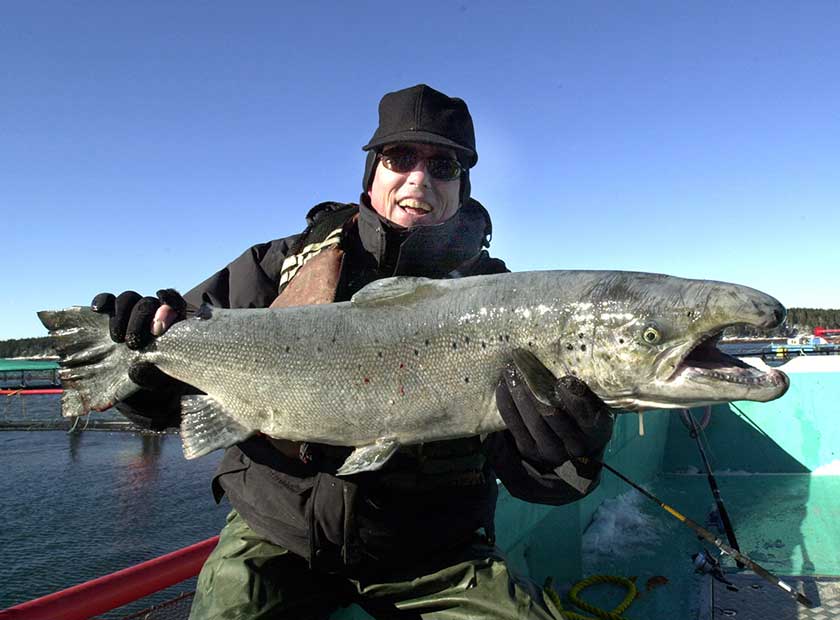
John Patriquin/Portland Press Herald via Getty Images
Historically, Atlantic salmon have been found from northern Québec southeast to Newfoundland and south to Long Island Sound. Catches of Atlantic salmon have been recorded in New Jersey, New York, and up the coast into Maine, but it must be pointed out that sea-run Atlantic salmon cannot be specifically targeted in Maine by anglers. Overfishing and dam construction lead to the demise of the species in most New England states to the point where they almost don't exist anymore, though they were once native to virtually every river north of the Hudson. It is said that the only native populations of Atlantic salmon left in the United States are found in the state of Maine.
Ocean run fish use feeding grounds in the summer months through the Canadian maritimes all the way to the coast of Greenland. As with most salmon, spawning runs occur in the fall when mature fish of about four years of age return to the freshwater rivers and streams where they were born. Depending on the size of the female, an Atlantic salmon will produce roughly 3,000 to 6,500 eggs in one spawn on her redd. Interestingly, Atlantic salmon generally don't live long after spawning but are capable of surviving and spawning a second time while most Pacific salmon die quickly after spawning. This unique style of spawning is becoming increasingly rare in Atlantic salmon. Newly-born Atlantic salmon can live as a smolt in the waters where they were born for about two to three years before they migrate to the ocean and begin their journey into adulthood.
As you might imagine, leaving their freshwater birthing areas to live in the open ocean has several benefits for Atlantic salmon. Since the overall abundance of food in the ocean is much higher than in freshwater, salmon are able to grow quite large in a shorter amount of time. This doesn't come without its drawbacks; these anadromous fish might be a top-level predator in freshwater, but they are prey to many in the sea. Everything from bluefin tuna and swordfish to sharks, seals, and orca whales will target salmon.
As a species, these salmon generally prey on mayflies, stoneflies, and caddisflies in rivers and streams, but in the ocean they set their eyes on the herring, lanternfish, squid, and octopus that they can catch. Sea-run salmon stop eating altogether just before they begin their spawning runs.
The Future of the Atlantic Salmon
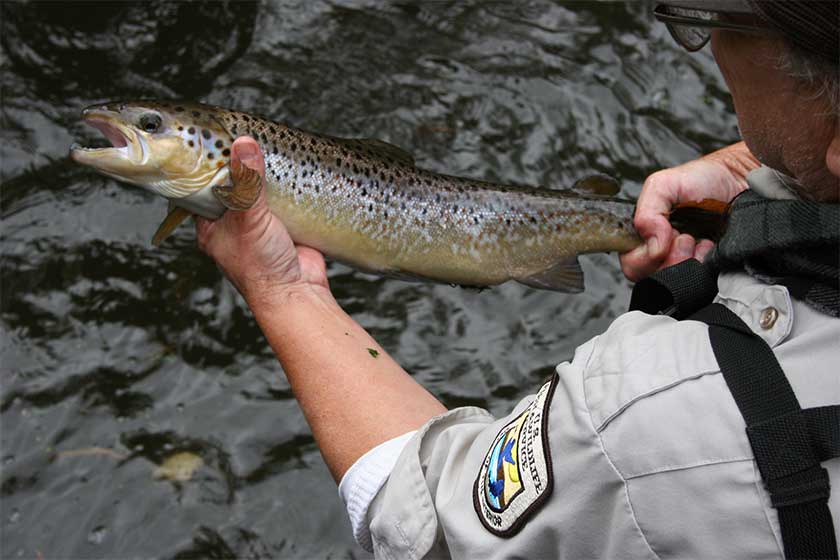
Greg Thompson/USFWS
Before humans began the construction of river dams in the early 1800s, hundreds of thousands of Atlantic salmon returned to North American rivers each year. Today, adult returns are can be as little as a few thousand, sometimes less. Technically, the only portion of non-farmed and stocked Atlantic salmon in the U.S., the Gulf of Maine's distinct population segment, is listed as endangered due to habitat degradation and barriers to their migration. At one time in the 1800s, these salmon were caught at rate of nearly 100 tons a year, mostly through commercial fishing operations. By the early 1900s that number fell by almost half. While recreational fishermen have not been blamed as the primary source of Atlantic salmon population demise, they have still had to face the consequences, including a ban on the opportunity to target them in a sporting way.
Atlantic state fish hatcheries are now on the leading edge of recovery for Atlantic salmon populations, although there is still a ways to go. Construction of fish ladders to help salmon bypass dams and return to spawn each season are improving fish stocks, albeit incrementally. Anglers can assist in salmon restoration by reporting bycatches and staying out of spawning waters after the runs have begun. But ultimately, the truly wild Atlantic salmon is facing a predicament few species are able to fully overcome. Without significant changes, the future of the Atlantic salmon isn't all that bright. But this "King of Fish," as it is known by many, will leave an impact on the world no matter what.
Please check out my book "The Hunter's Way" from HarperCollins. Be sure to follow my webpage, or on Facebook and YouTube.
